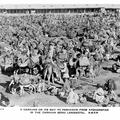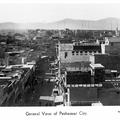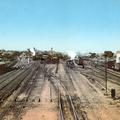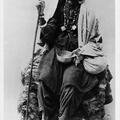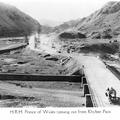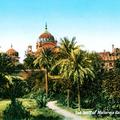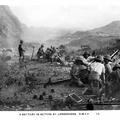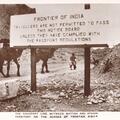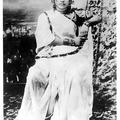A Caravan on its Way to Peshawar
[Original] A Caravan on Its Way to Peshawar from Afghanistan in the Caravan Serai Landikotal N.W.F.P. [end]
Postcards like this illustrate how enormous the trade through the Khyber Pass once was. The Peshawar District Gazetteer 1897-98 put the value

